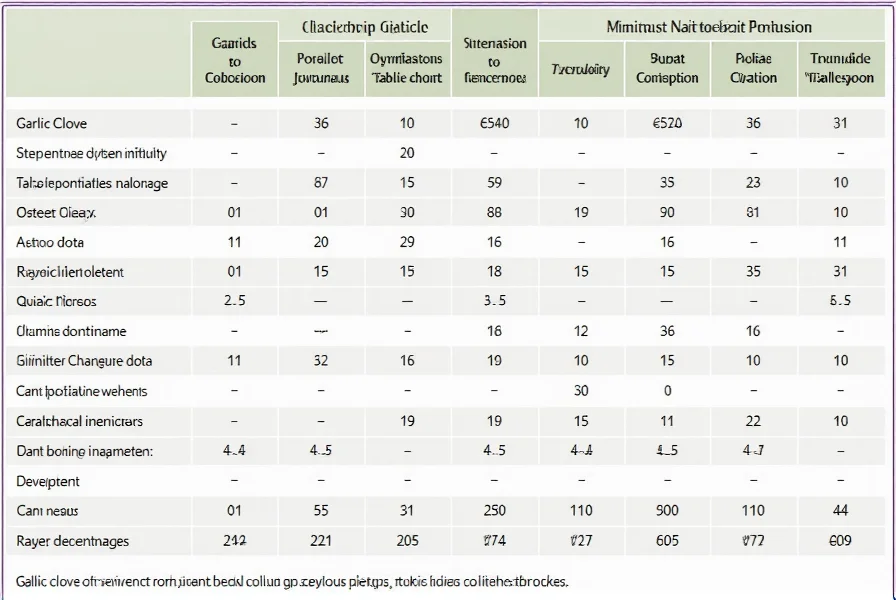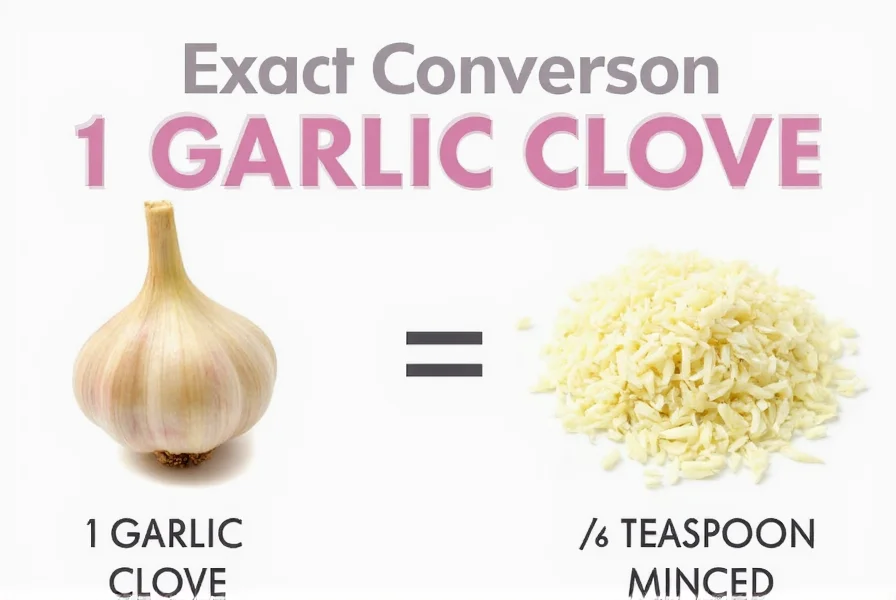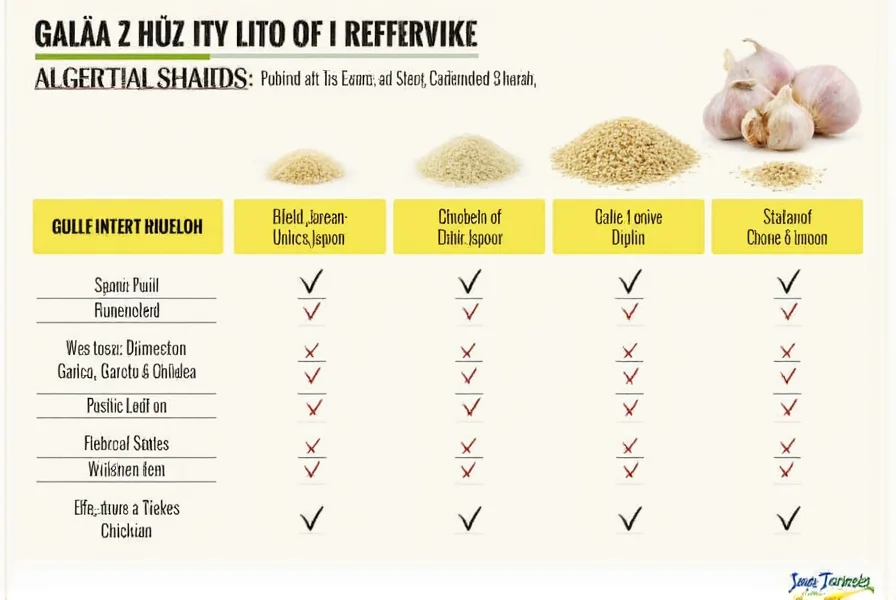Understanding garlic measurements is essential for consistent cooking results. While the standard conversion provides a reliable starting point, several factors influence the precise garlic-to-tablespoon ratio in your recipes.
Factors Affecting Garlic Measurement Accuracy
Garlic clove size varies significantly between varieties and growing conditions. A single head of garlic typically contains cloves ranging from petite to jumbo. When following recipes, consider these variables:
- Clove size classification: Small (less than 1 inch), medium (1-1.5 inches), large (over 1.5 inches)
- Preparation method: Minced versus pressed garlic yields different volumes
- Moisture content: Freshly harvested garlic contains more water than stored bulbs
- Packing density: How tightly you pack minced garlic into measuring spoons
Garlic Clove to Tablespoon Conversion Chart
| Garlic Form | Small Clove | Medium Clove | Large Clove |
|---|---|---|---|
| Minced Garlic | 1⁄4 tsp | 1⁄2 tsp | 3⁄4 tsp (1⁄4 tbsp) |
| Garlic Puree | 1⁄8 tsp | 1⁄4 tsp | 1⁄2 tsp |
| Dried Garlic Flakes | 1⁄8 tsp | 1⁄4 tsp | 1⁄2 tsp |
| Garlic Powder | 1⁄16 tsp | 1⁄8 tsp | 1⁄4 tsp |
Practical Cooking Applications
When substituting minced garlic for whole cloves in recipes, consider the dish's nature. For delicate sauces or dressings where garlic flavor should be subtle, use the lower end of the measurement range. Robust dishes like stews or roasted vegetables can handle the higher end.
Professional chefs often recommend smashing cloves before mincing to release more flavor compounds. This technique affects volume slightly but significantly impacts flavor intensity. For most home cooking applications, the standard garlic clove to tablespoon conversion provides excellent results when adjusted for your preferred garlic strength.

When Precision Matters in Garlic Measurement
Certain recipes demand precise garlic measurements. In mayonnaise-based sauces, aiolis, or garlic-infused oils, exceeding recommended amounts can overpower other flavors or cause digestive discomfort. Conversely, in Mediterranean or Asian cuisines where garlic forms the flavor foundation, being too conservative diminishes authenticity.
For baking applications involving garlic (like breads or crackers), precise measurements are crucial as garlic interacts with leavening agents. In these cases, weighing garlic provides the most accurate results: one medium clove weighs approximately 10 grams.
Avoiding Common Garlic Measurement Mistakes
Cooks frequently make these errors when converting garlic cloves to tablespoons:
- Using heaping tablespoons instead of level measurements
- Not accounting for garlic variety differences (Silverskin vs. Artichoke types)
- Substituting jarred minced garlic without adjusting for preservatives and moisture
- Measuring whole cloves in tablespoon quantities rather than converted minced form
For best results, always mince garlic immediately before use. Pre-minced garlic loses potency within hours as enzymatic reactions diminish flavor compounds. If using pre-minced garlic from jars, increase the quantity by 25% to compensate for flavor degradation.

Garlic Measurement Guide for Recipe Scaling
When doubling or halving recipes, garlic measurements don't always scale linearly. For small batches (serving 1-2), increase garlic slightly for balanced flavor. For large batches (serving 8+), decrease garlic proportionally to prevent overwhelming intensity.
Understanding these nuances transforms your cooking precision. Whether you're following a family recipe calling for "3 cloves" or a professional recipe specifying "1 tablespoon minced garlic," this garlic measurement knowledge ensures consistent, delicious results every time.
Frequently Asked Questions
How many garlic cloves equal 1 tablespoon of minced garlic?
Six medium garlic cloves yield approximately 1 tablespoon of minced garlic. However, this varies by clove size: small cloves require 12 for 1 tablespoon, while large cloves need only 4 for the same measurement.
Can I substitute jarred minced garlic for fresh cloves using the same conversion?
Adjust your conversion when using jarred minced garlic. Due to preservatives and moisture content, you'll need about 25% more jarred product to match fresh garlic's potency. For recipes requiring 1 tablespoon fresh minced garlic, use 1⁄4 tablespoon plus 1⁄2 teaspoon of jarred version.
Does roasting garlic change the clove to tablespoon conversion?
Roasting reduces garlic's volume by approximately 20% due to moisture loss. When using roasted garlic, increase your measurement by one-fifth. For example, if a recipe calls for 1 tablespoon fresh minced garlic, use 1⁄4 tablespoon roasted garlic paste for equivalent flavor impact.
How do I convert garlic powder to fresh cloves?
Use this garlic powder conversion: 1⁄8 teaspoon garlic powder equals one medium fresh garlic clove. Therefore, 3⁄4 teaspoon (or 1⁄4 tablespoon) garlic powder substitutes for 6 medium cloves. Remember that garlic powder delivers more concentrated flavor, so adjust to taste.
Why does my garlic measurement never match recipe results?
Inconsistent results often stem from not accounting for garlic variety differences or preparation methods. Older bulbs yield less volume when minced. For reliable conversions, always use level measurements, account for clove size, and consider whether your recipe specifies loosely packed or firmly packed minced garlic.











 浙公网安备
33010002000092号
浙公网安备
33010002000092号 浙B2-20120091-4
浙B2-20120091-4